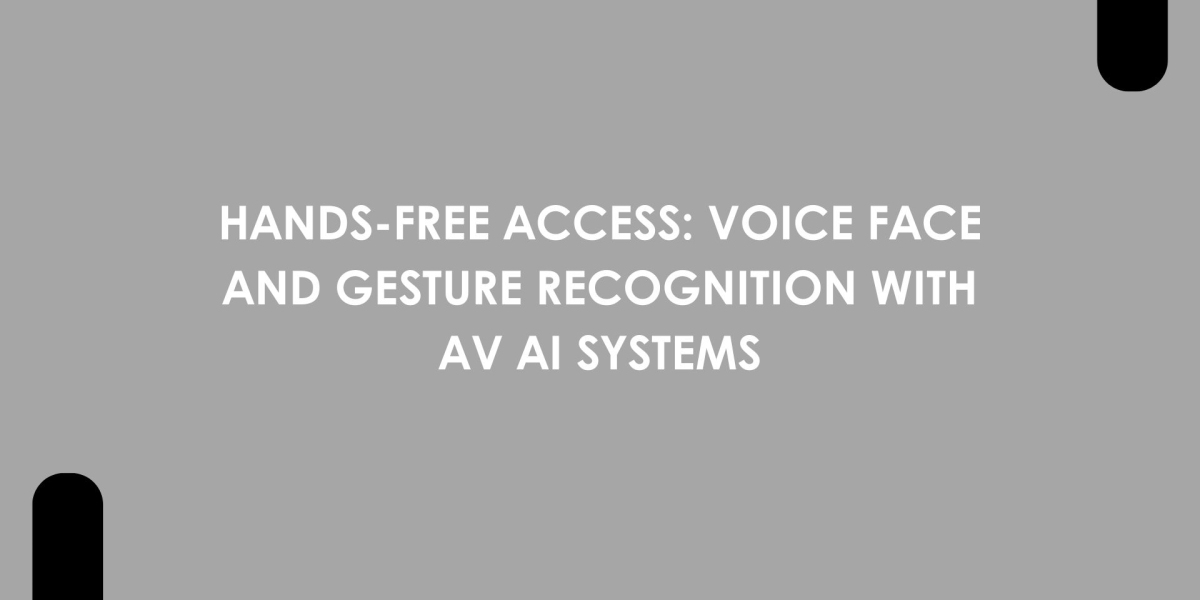As technology advances, traditional access control methods like keys and cards are giving way to more sophisticated and convenient solutions. Hands-free access systems using voice recognition face recognition and gesture control are transforming the way people interact with secure environments. These technologies not only enhance security but also improve user experience by providing fast contactless entry.
In the context of AV AI systems, integrating these biometric and behavioral recognition methods can create seamless and intelligent access control solutions. At XTEN-AV, we empower AV professionals to design and implement cutting-edge systems that incorporate hands-free access features for a variety of settings. This blog will explore the core technologies behind voice face and gesture recognition the benefits they offer and how they fit into modern AV AI-enabled security environments.
What Is Hands-Free Access
Hands-free access refers to systems that allow users to gain entry without physically touching a device such as a keypad fingerprint scanner or card reader. Instead, these systems use biometric identifiers or gestures to verify identity and grant access. The primary hands-free technologies in use today include:
Voice Recognition: Identifies users based on unique vocal characteristics.
Face Recognition: Uses cameras and AI to match facial features against stored profiles.
Gesture Recognition: Detects specific hand or body movements as commands for access.
These technologies can operate independently or be combined for multi-factor authentication increasing both security and convenience.
Voice Recognition for Access Control
Voice recognition systems analyze a person's speech patterns to authenticate their identity. They use microphones and AI algorithms to capture and compare voice samples with pre-registered profiles.
Advantages
Contactless and natural form of authentication
Can work remotely via smartphones or intercoms
Harder to spoof due to unique voice patterns and liveness detection
Challenges
Background noise can affect accuracy
Requires user cooperation and clear speech
Privacy concerns over voice data storage
In AV AI systems, voice recognition can be integrated with audio intercoms or smart assistants to allow authorized personnel to unlock doors or activate AV controls simply by speaking a passphrase.
Face Recognition in AV Access Control
Face recognition technology uses cameras to capture facial images and AI to analyze unique facial landmarks. It compares the captured face against a database of authorized users to grant or deny access.
Advantages
Fast and contactless identification
Does not require user interaction beyond presenting their face
Can be combined with video analytics for enhanced security
Challenges
Lighting conditions and camera quality affect performance
Privacy and ethical concerns regarding facial data
Requires robust anti-spoofing measures to prevent misuse
In AV environments, face recognition can be paired with digital signage and room booking systems to provide personalized experiences, such as welcoming users or automatically adjusting room settings upon entry.
Gesture Recognition for Access Control
Gesture recognition detects predefined hand or body movements using cameras or sensors. In access control, simple gestures can trigger door unlocking or system activation without physical contact.
Advantages
Intuitive and user-friendly
Useful in sterile or high-security environments where touch is restricted
Can be combined with other biometric methods for multifactor security
Challenges
Requires precise sensors and programming
May be less secure if gestures are easily observable or replicable
Limited standardization and adoption in access control compared to voice and face recognition
Gesture recognition is particularly useful in AV spaces such as conference rooms where hands-free control of doors, projectors, and lighting enhances the overall user experience.
Benefits of Integrating Hands-Free Access with AV AI Systems
Improved Hygiene and Safety
Especially relevant in healthcare and public facilities, eliminating the need for physical contact reduces the spread of germs and viruses.Faster and More Convenient Access
Users do not need to fumble for keys or cards. Authentication happens instantly, streamlining entry and enhancing the user experience.Enhanced Security
Biometric and behavioral identifiers are difficult to fake and can be combined for multifactor authentication to increase security levels.Seamless AV Integration
When integrated with AV AI systems, hands-free access can trigger automated room settings such as lighting adjustments, projector power on, and audio control based on the user profile.Remote Management and Monitoring
AI-enabled systems allow administrators to monitor access events in real time and adjust permissions remotely, improving control and responsiveness.
Implementation Considerations
Privacy and Compliance
Ensure biometric data is stored and handled according to legal and ethical guidelines, including user consent and data protection laws.Hardware and Environment
High-quality cameras microphones and sensors are critical. Consider lighting noise and space layout when planning installations.User Training and Acceptance
Communicate clearly to users how hands-free access works and address any concerns about data usage or system reliability.System Integration
Use platforms like XTEN-AV to design integrated AV and access control solutions ensuring smooth communication between components and future scalability.
Future Outlook
The combination of voice face and gesture recognition with AV AI systems is expected to grow rapidly in the next decade. Advances in AI accuracy sensor technology and edge computing will make hands-free access faster safer and more reliable. Emerging trends include multimodal biometrics that use several identifiers simultaneously and context-aware systems that adapt authentication based on location and behavior.
Conclusion
Hands-free access using voice face and gesture recognition is reshaping how secure environments operate. These technologies offer a blend of convenience security and user experience that traditional access methods cannot match. When integrated within AV AI systems, hands-free access also opens the door to intelligent automation and personalized control of audiovisual environments.
At XTEN-AV, we provide AV professionals with the tools to design and implement advanced access control systems incorporating these innovative technologies. Embracing hands-free access today means preparing for a smarter more secure tomorrow.
Read more: https://anotepad.com/notes/f25a695g








